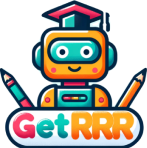Get a free exercise
Global K-12 Education Technology Market Set for Explosive Growth by 2030
Research and Markets report forecasts explosive global growth in the K-12 education technology market driven by digital innovation, personalized learning, and strong government support.
Date of writing
February 26, 2025
Time of reading
2 minutes
Dublin, Feb. 24, 2025 – In a detailed new report titled K-12 Education Technology - Global Strategic Business Report, Research and Markets highlights how digital tools are reshaping classrooms worldwide, as stated by Globe Newswire. According to the report, "Education technology is transforming the K-12 landscape by making learning more interactive, accessible, and engaging." This transformation is providing teachers with the ability to tailor instruction to individual needs, while students benefit from a wealth of resources that extend far beyond traditional textbooks.
The report reveals that the global market for K-12 education technology was valued at US$18 billion in 2024 and is projected to reach US$55.4 billion by 2030. This impressive growth trajectory is fueled by a compound annual growth rate (CAGR) of 20.6% from 2024 to 2030. As educational institutions worldwide pivot towards digital solutions, these tools are being used to create more inclusive, immersive, and personalized learning experiences.
Several key drivers are propelling the market forward:
Major players featured in the study include Age of Learning, BYJU'S, Cengage Learning India Private Limited, Discovery Education, Inc., Duolingo, Inc., Epic Systems Corporation, Finalsite, IXL Learning, K12, Inc., and McGraw-Hill Education.
With educational institutions increasingly emphasizing interactive, personalized, and accessible learning environments, the future of K-12 education technology looks robust. As stated in the report, the continuous advancements in AI, AR/VR, and cloud-based solutions are not only modernizing education but are also creating a dynamic, real-world applicable learning ecosystem.
The report reveals that the global market for K-12 education technology was valued at US$18 billion in 2024 and is projected to reach US$55.4 billion by 2030. This impressive growth trajectory is fueled by a compound annual growth rate (CAGR) of 20.6% from 2024 to 2030. As educational institutions worldwide pivot towards digital solutions, these tools are being used to create more inclusive, immersive, and personalized learning experiences.
Several key drivers are propelling the market forward:
- Personalized Learning: Digital tools now enable teachers to "tailor instruction based on each student's needs," ensuring lessons are both inclusive and relevant.
- Technological Advancements: The integration of artificial intelligence (AI) is at the forefront, with adaptive learning systems and AI-driven analytics offering real-time insights into student performance. Additionally, augmented reality (AR) and virtual reality (VR) technologies are making abstract subjects more tangible through immersive experiences.
- Government Support: Robust funding initiatives and grants from various governments have accelerated digital transformation in classrooms, easing the implementation of new technologies.
- Pandemic-Driven Shifts: The COVID-19 pandemic spurred an urgent shift to remote learning, a trend that continues to influence the adoption of hybrid and blended learning models.
- Learning Management Systems (LMS): Platforms like Google Classroom and Canvas centralize lesson delivery, assignment management, and student tracking.
- Interactive and Gamified Platforms: Tools such as Kahoot!, Nearpod, and Edmodo transform traditional lessons into engaging, game-based learning experiences.
- Virtual Learning Environments (VLEs): These environments offer virtual labs, simulations, and 3D models, particularly enhancing STEM education.
- Assessment and Portfolio Tools: Digital portfolios and assessment systems provide continuous feedback, allowing educators to track student progress over time.
Major players featured in the study include Age of Learning, BYJU'S, Cengage Learning India Private Limited, Discovery Education, Inc., Duolingo, Inc., Epic Systems Corporation, Finalsite, IXL Learning, K12, Inc., and McGraw-Hill Education.
With educational institutions increasingly emphasizing interactive, personalized, and accessible learning environments, the future of K-12 education technology looks robust. As stated in the report, the continuous advancements in AI, AR/VR, and cloud-based solutions are not only modernizing education but are also creating a dynamic, real-world applicable learning ecosystem.

 Home
Home